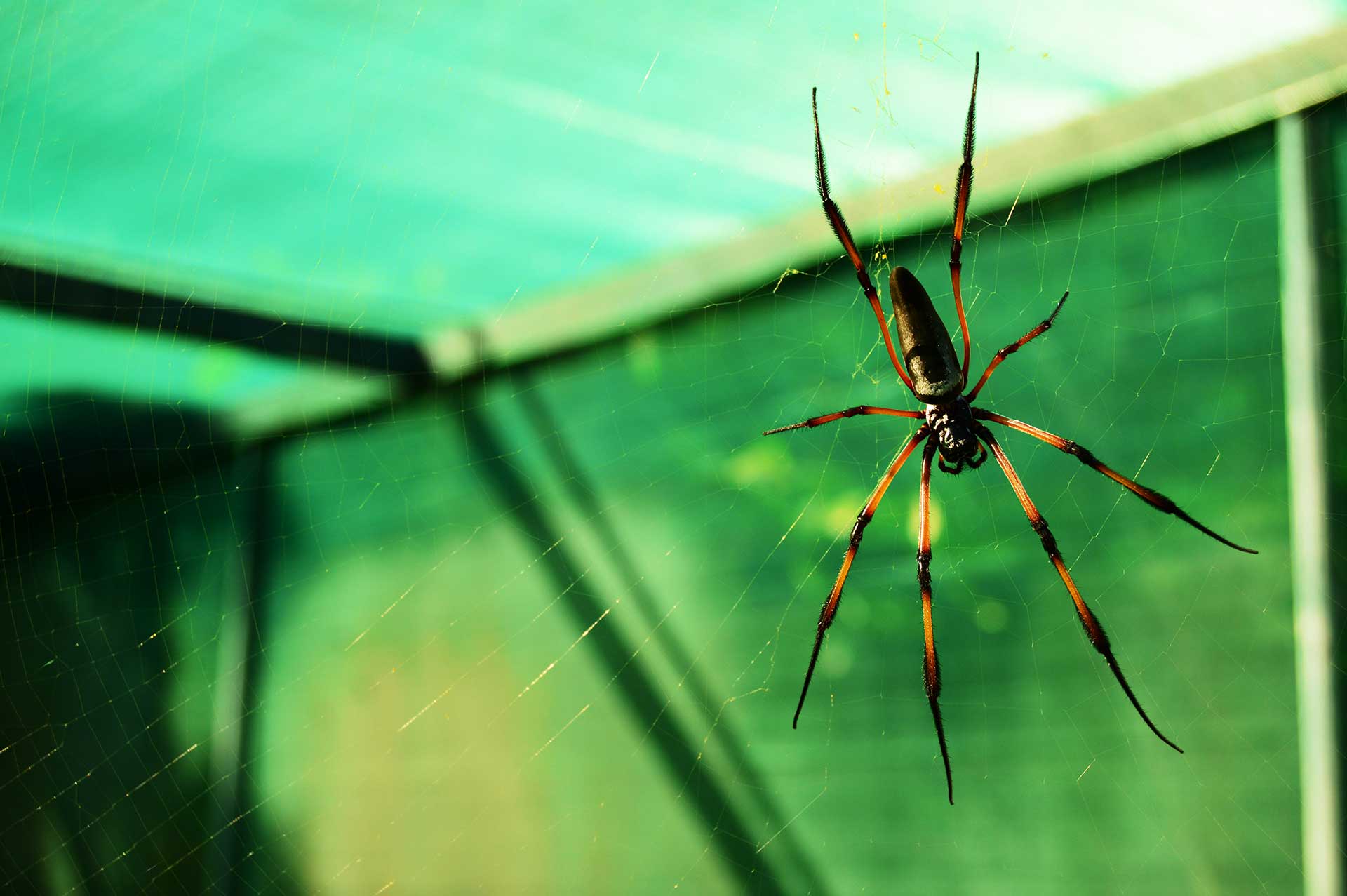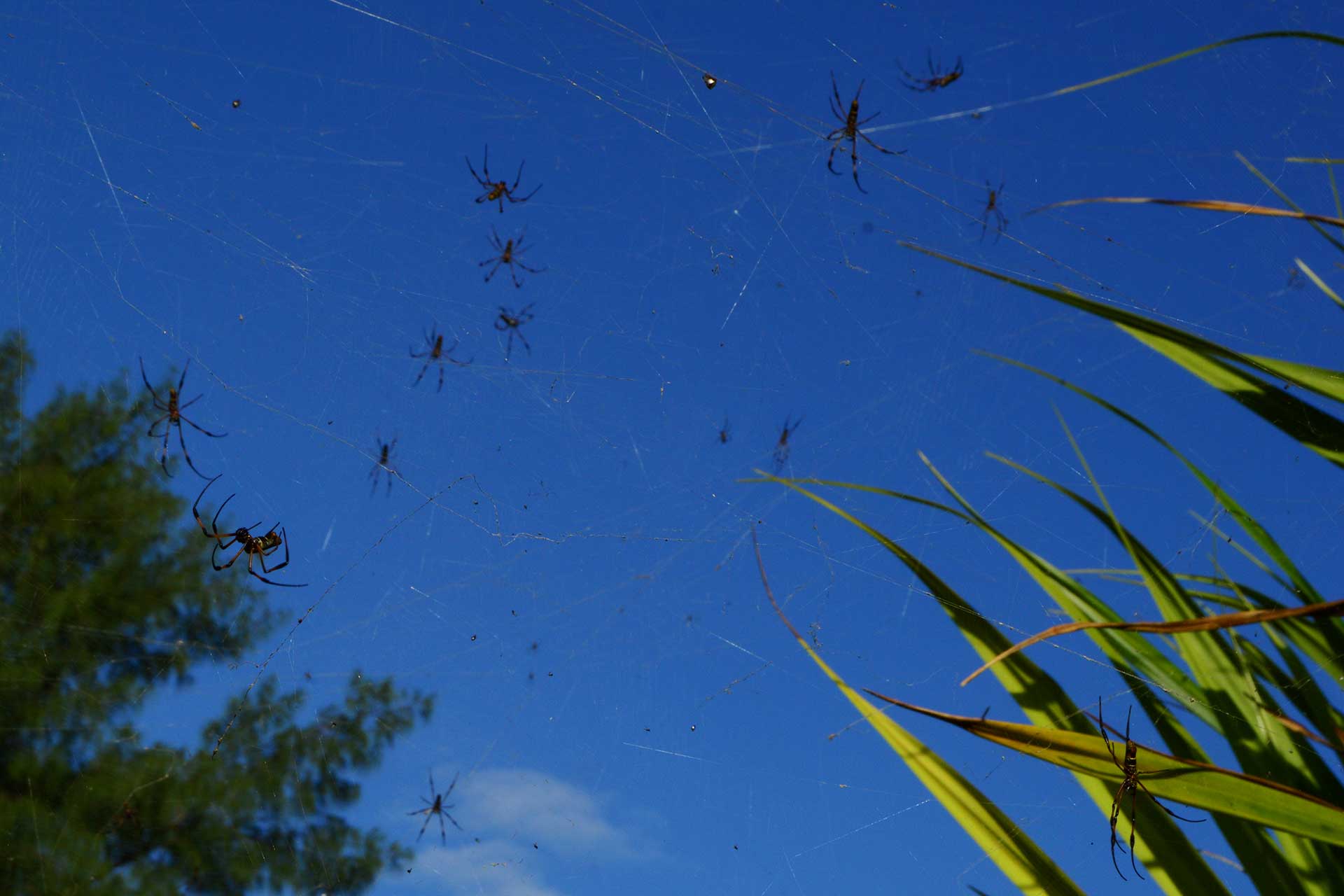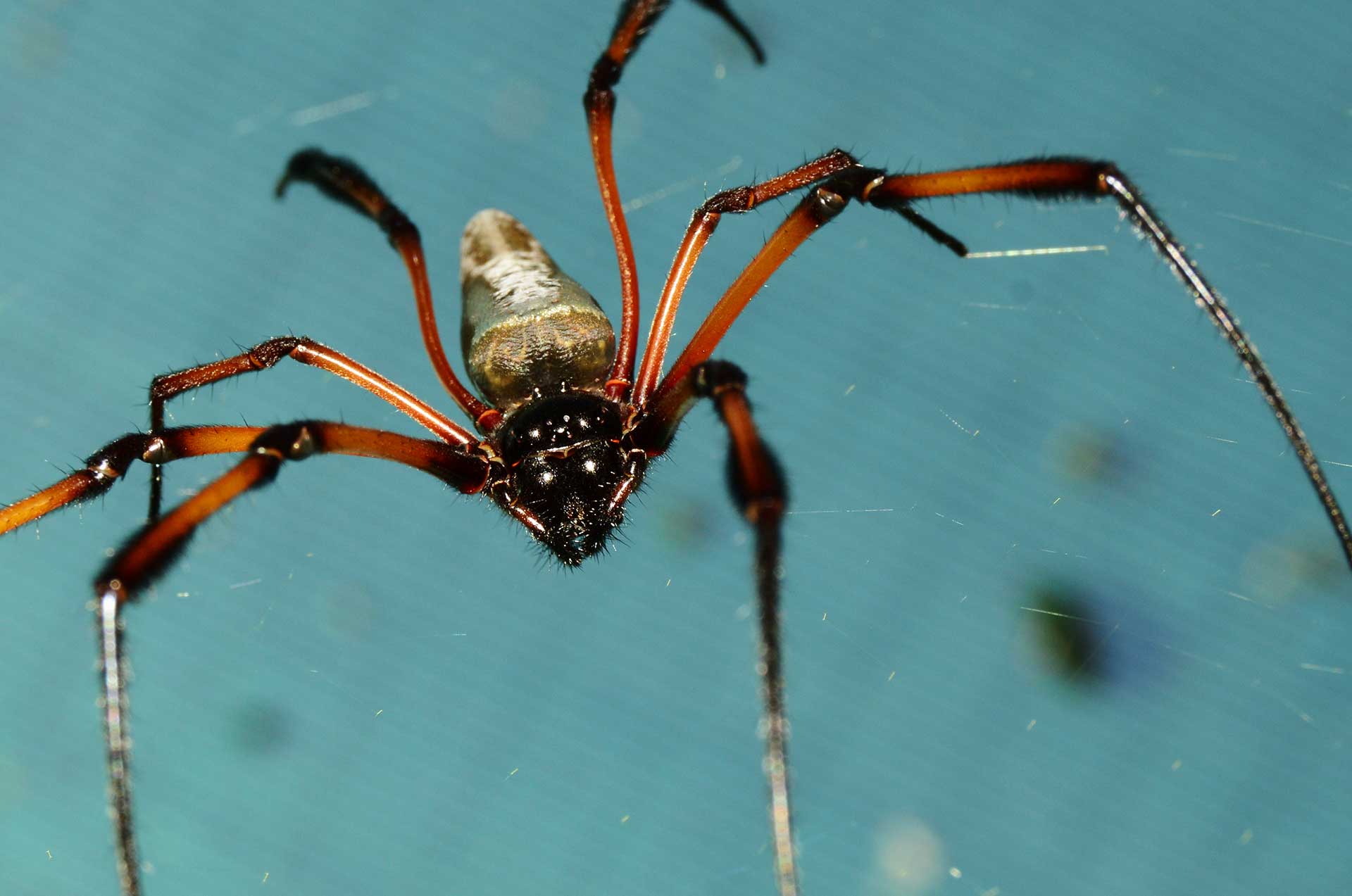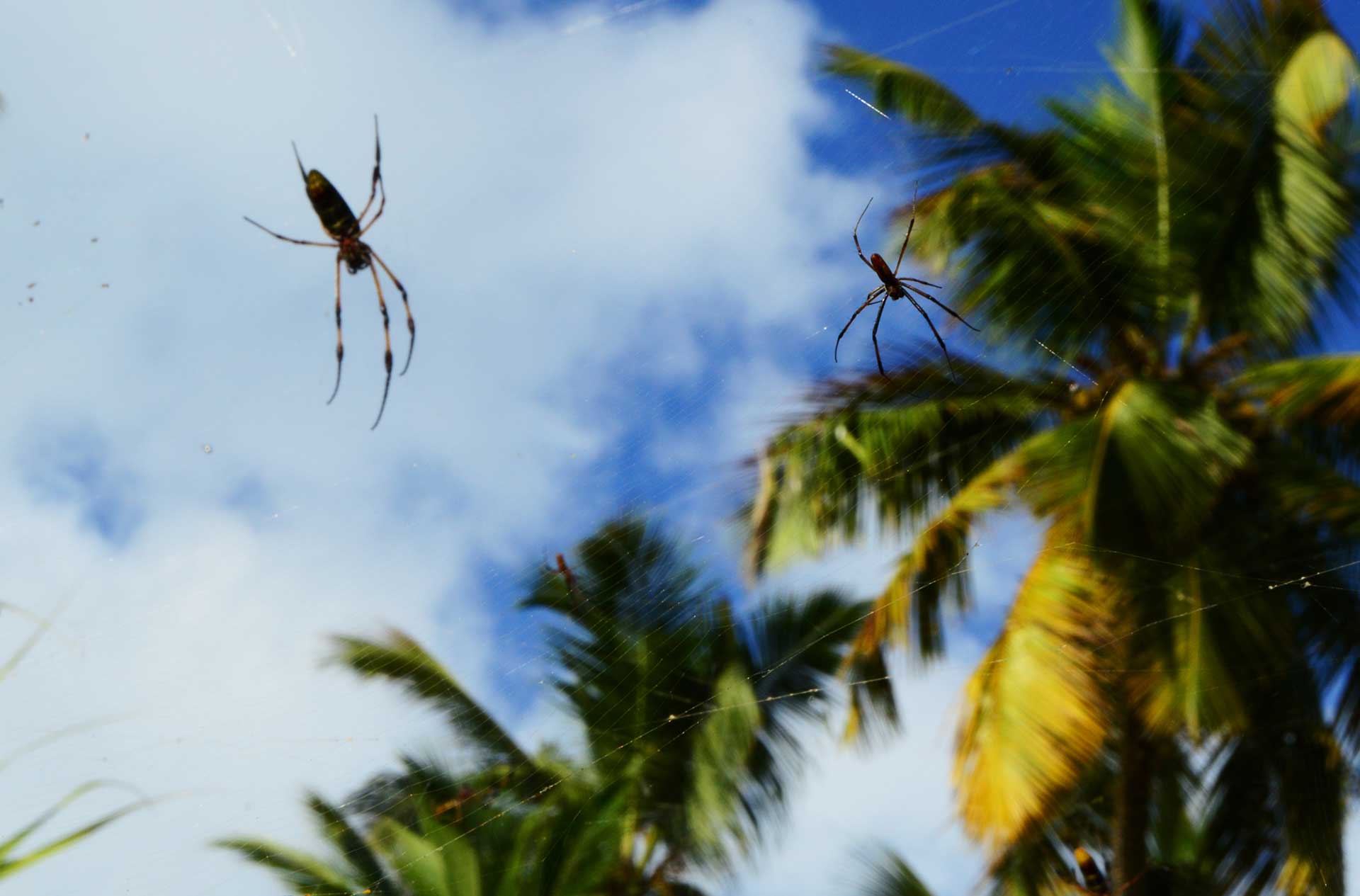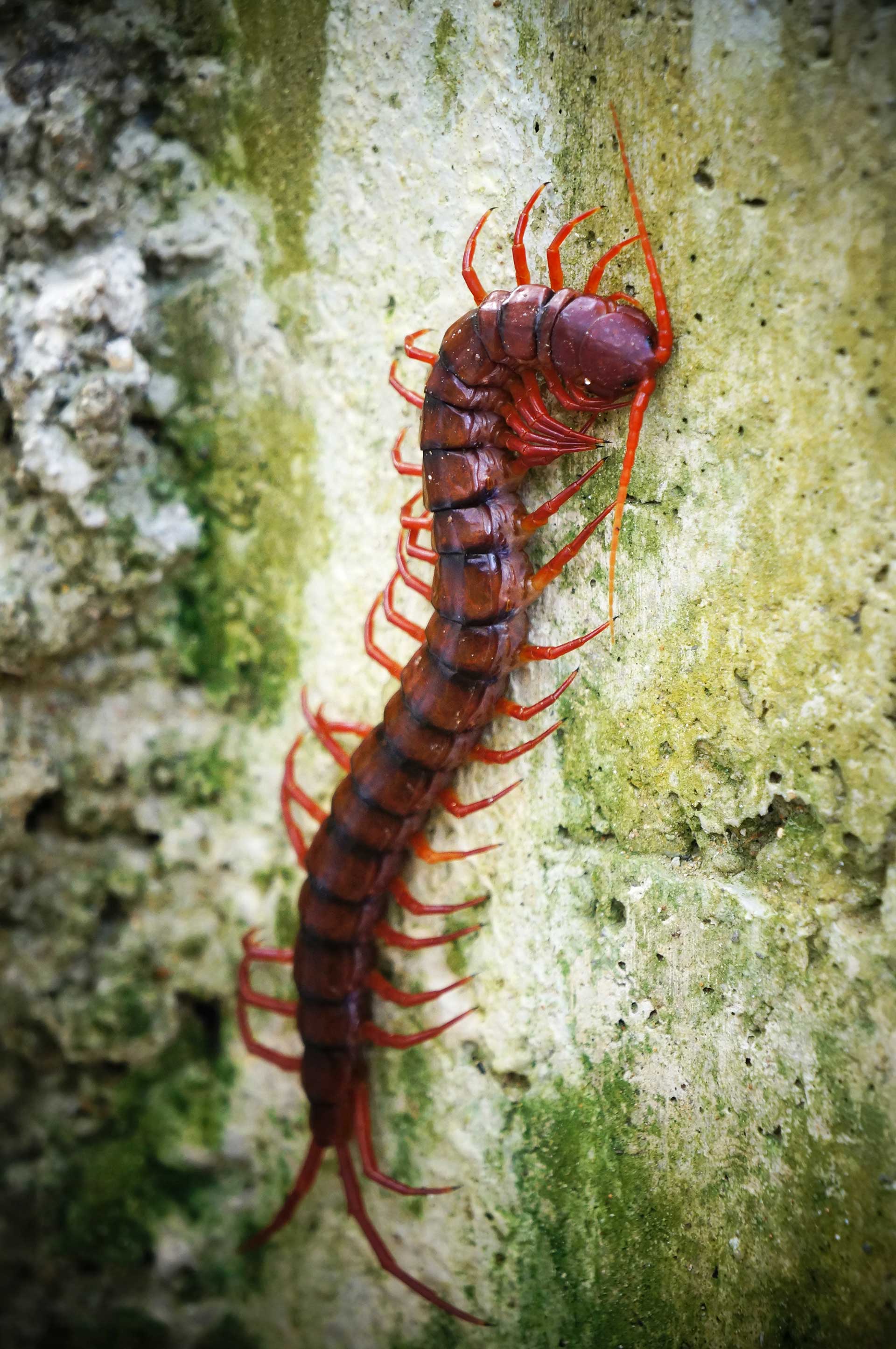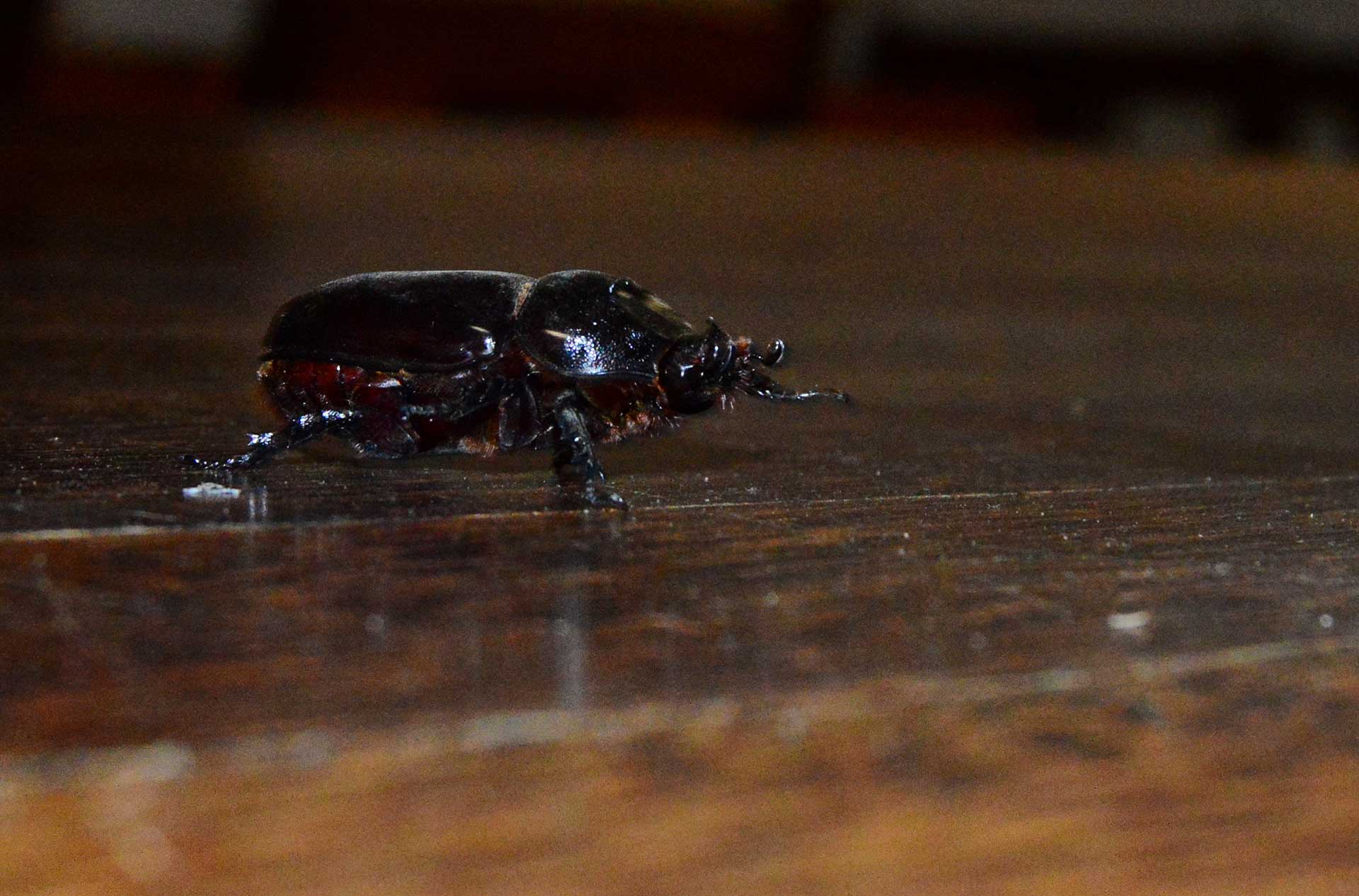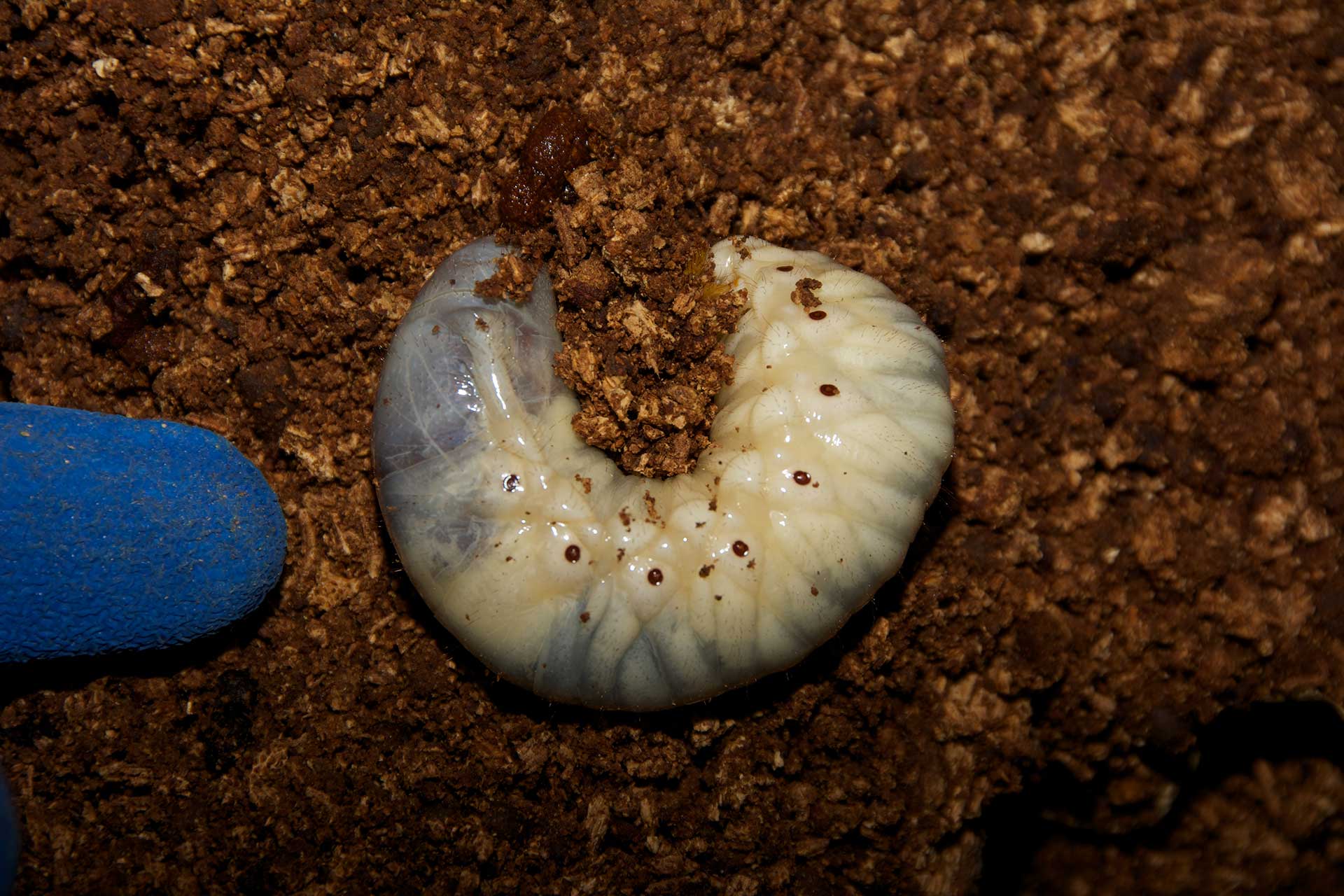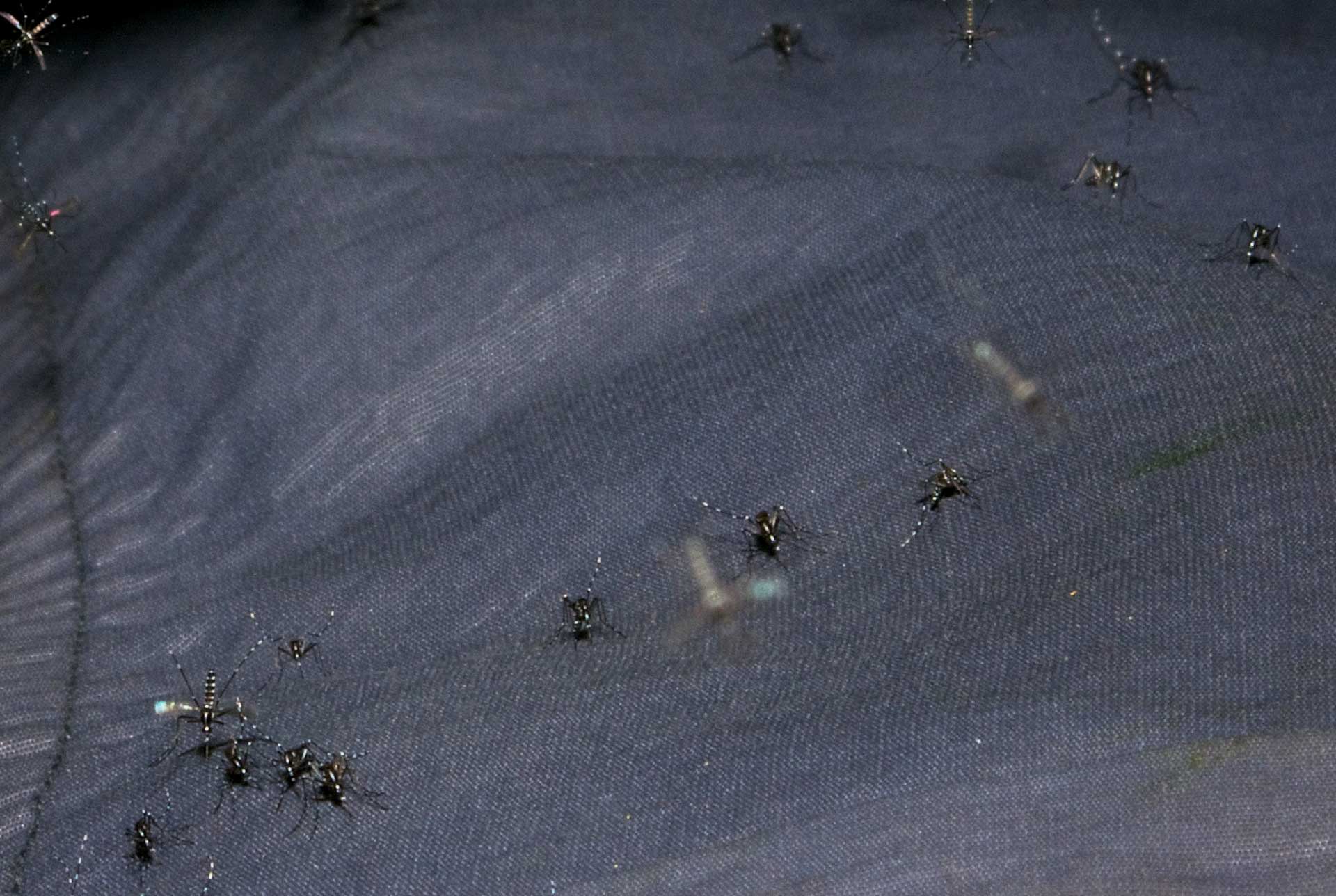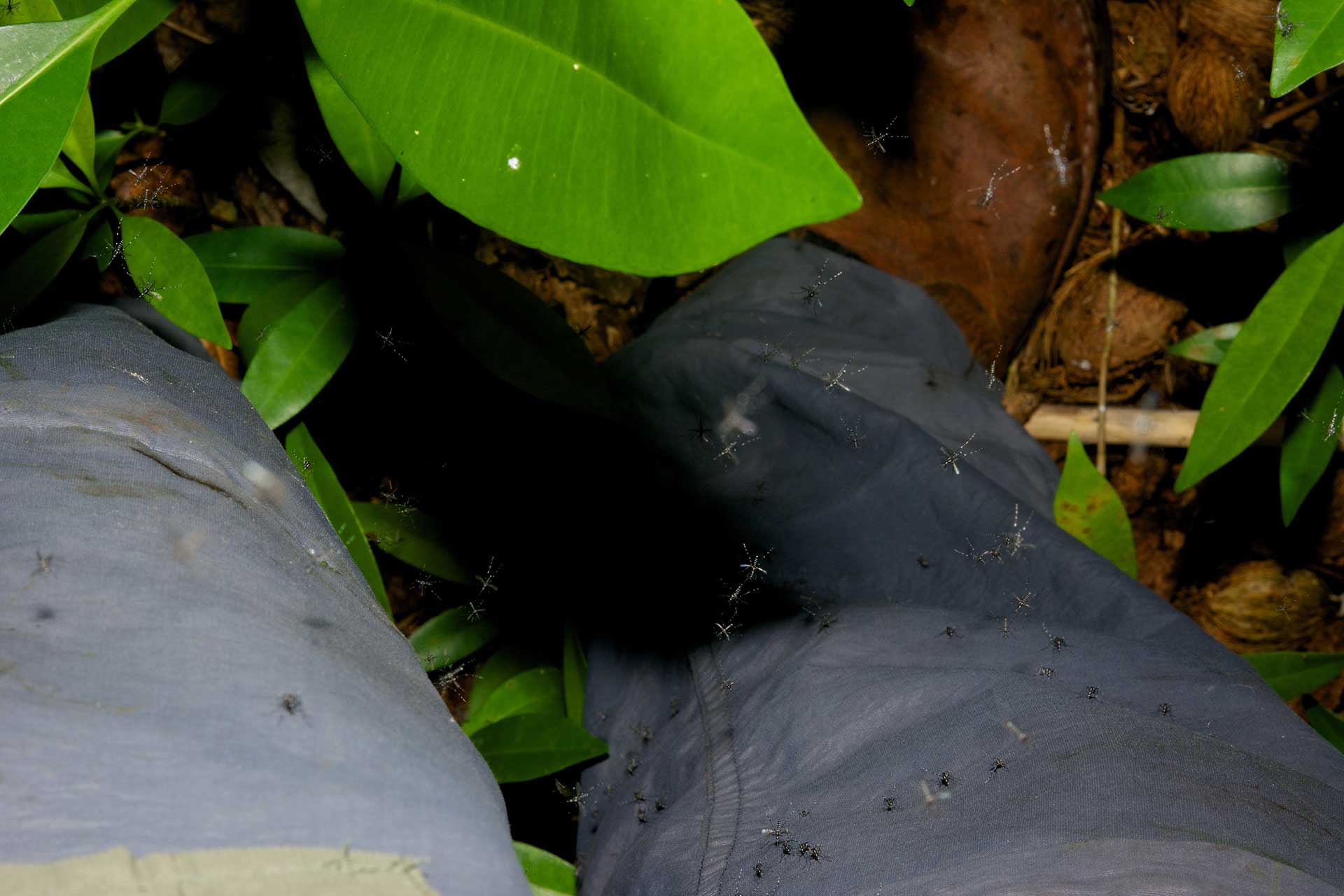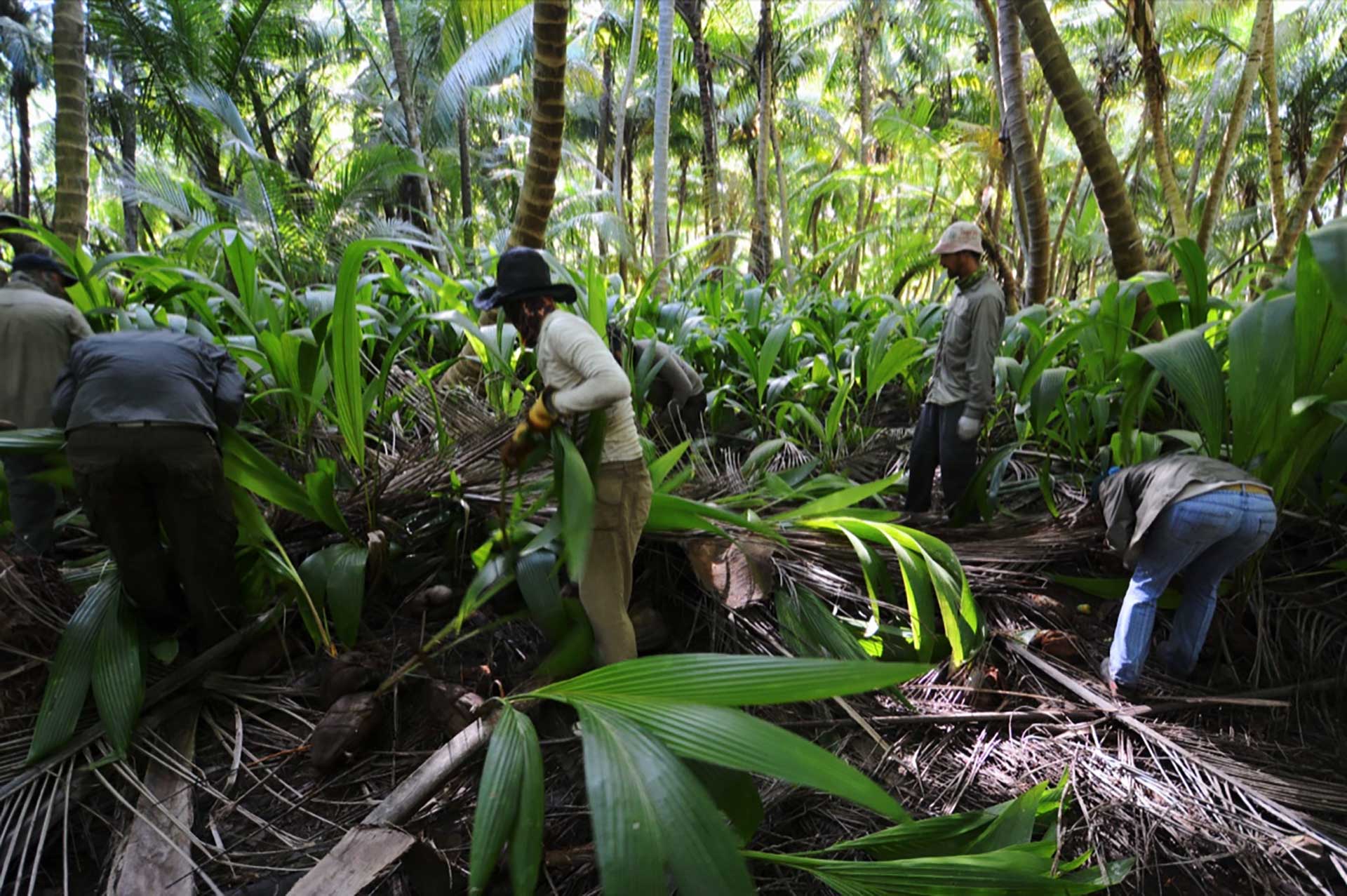The buzzzzz on D’Arros
The broad definition of an invertebrate is an animal that lacks a back bone. This very diverse group constitutes 97 per cent of all known species, from sponges to jellyfish, fruit flies to centipedes and more. Even D’Arros Island, a tiny speck in the middle of a large ocean, has its fair share of dynamic terrestrial invertebrates.
Among those worth mentioning, for various reasons, is the palm spider Nephila inaurata madagascariensis. This beautiful spider is a member of the golden orb-web spider family and is also known as the red-legged golden orb-web spider (figure 1). The name Nephila is derived from old Greek and loosely translated it means ‘loves to spin’. This genus of spiders spins very strong, intricate, golden webs between anything: bushes, trees, poles – even between my bicycle and the house. Several palm spiders can live together (figure 2) and they string collective webs that cover a large surface area (figure 3).
The females (figure 4) are the ones worth looking out for as they have red legs and striking yellow, black and silver markings on the abdomen and are 20 times bigger than the dull males (figure 5). The females do all the work, constructing the web while the tiny males live on the peripheral strands (figure 6). The male bides his time until he is ready to mate, at which point he has to choose his moment with care: if the female is not fully engrossed with a large meal, he may end up as the trimmings.
Luckily the palm spider is harmless to humans. There is, however, another invertebrate on D’Arros Island worth looking out for. One bite from the large fangs of the giant centipede Scolopendra subspinipes (figure 7) injects a strong alkaline solution that causes extreme pain and severe swelling, sometimes escalating to weakness or fever.
This creepy critter grows to 25 centimetres long and, surprisingly, is the most dangerous terrestrial animal on D’Arros. It is a nocturnal predator and seeks warm, dark, moist places to hide during the day, so we always have to thoroughly shake out our wetsuits and reef booties, or anything else that fits that description, before putting them on.
On a less dangerous note, a special and rare invertebrate encounter involves the coconut or rhinoceros beetle Oryctes rhinoceros (figure 8). This supersized version of a rhino beetle is the largest beetle in the Seychelles and has a really interesting metamorphic life cycle. The adult females lay eggs in dead coconut palms or decaying organic matter. When the larvae hatch, they feed on decomposed organic matter and grow into squishy, white, bloated grubs with a red head (figure 9). Once fully engorged, these grubs enter a non-feeding pupal stage that lasts several days until an adult rhino beetle emerges from the casing.
The last terrestrial invertebrate on my list takes the prize for being the most annoying and most often talked about of them all. It is the buzzing, blood-sucking bane of my happy island existence – the mosquito Aedes spp.; (figure 10). With a population millions-strong, this flying insect is relentless in attack. It has a stronghold in the coconut forests, making forest rehabilitation an exercise of literally blood loss, sweat and tears (figure 11).
So despite the hot climate and strenuous work, the appropriate attire for being in the forest is boots, long pants, long-sleeve shirt, a buff (to stop you breathing them in), a hat to cover your head and an iPod with music (to cancel out the buzzing; figure 12).

